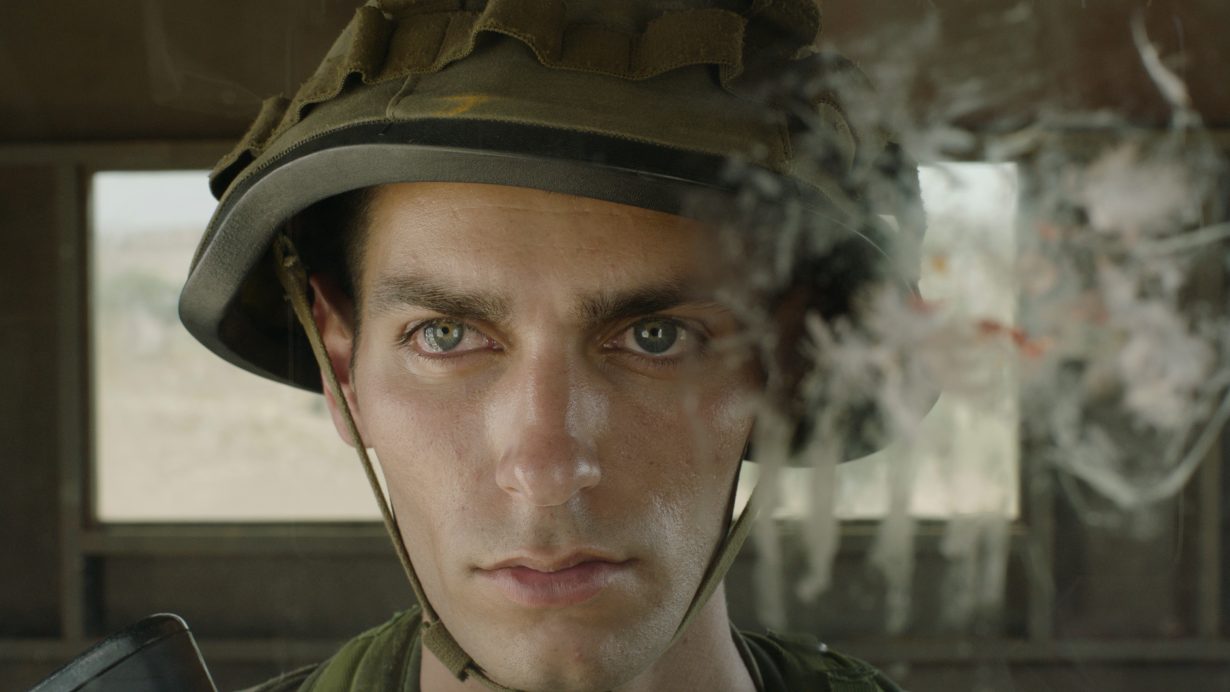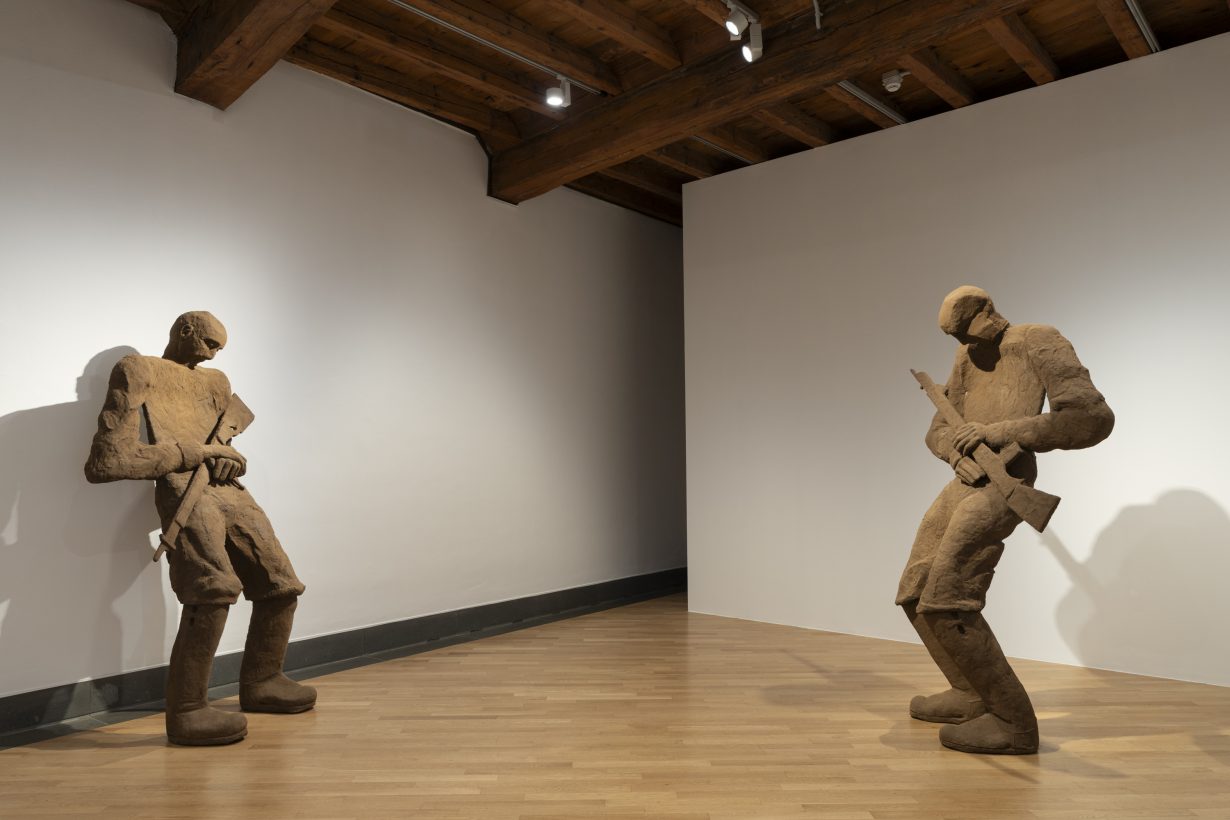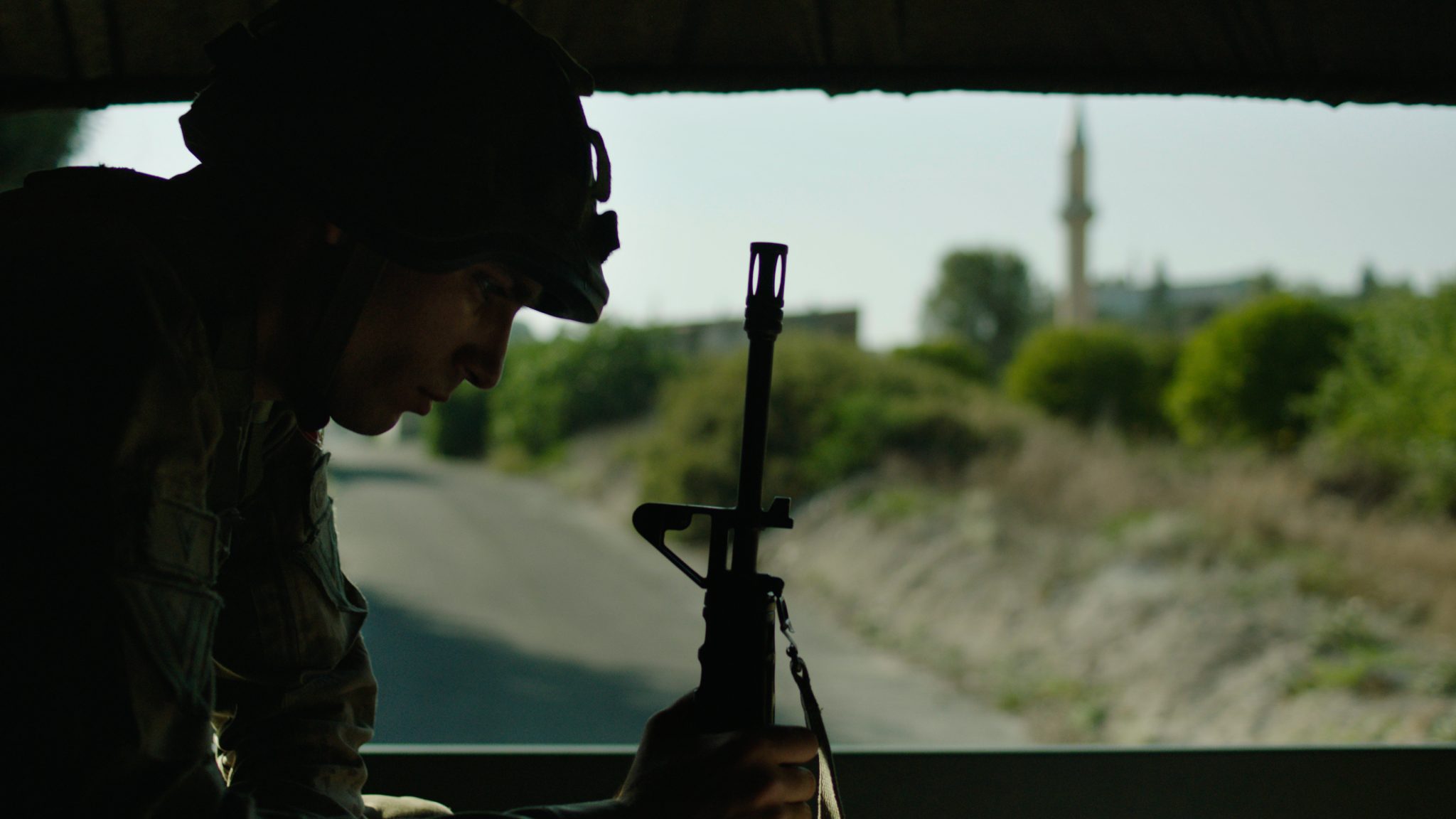Dreamless Night at GAMeC, Bergamo vanishes the distinction between fiction and reality through the life of a young Turkish-Cypriot soldier
At first it felt blurred. Blurred in the way you might experience a dream. ‘It’ is a largescale video installation, on show in Dreamless Night, curated by Alessandro Rabottini and Leonardo Bigazzi. It’s titled The Watchman (all works 2023) and focuses on the life of a young Turkish-Cypriot soldier guarding the border of the unrecognised Turkish Republic of Northern Cyprus. We watch as he works his shifts, one after another. Nothing really happens. Until a robin crashes into the guardhouse window, deceived by the apparent transparency of the glass. A series of notches on the wall indicate that it is not the first to be taken in.
Generally, the distinction between fiction and reality vanishes as the video’s narrative unfolds. And as you attempt to wrap your mind around what is real and what is not, the curators’ decision to place No Man’s Land (Theater Backdrop) – a large, realistically painted fabric that represents the landscape of Cyprus, where the video was shot – at the entrance to the exhibition only adds to that sense of blurriness.

The command ‘wake up soldier, open your eyes’ is carved onto the wooden wall of the guardhouse above the window. As for the protagonist, his eyes are at times red and shiny, glassy almost, and lacking focus; at other times they remain closed, sometimes for a long time, as if at rest. The video is, for the most part, shot from an aerial viewpoint, as if to surveil the desolate and dusty landscape, dotted with flat-roofed houses and sparse vegetation; it comes across as a position of dominance over the land beneath it.
We follow the soldier as he buries the robin’s corpse. Along the way we pass a row of withering prickly pear cactuses; these plants, traditionally used in the Mediterranean to delimit property boundaries and create natural barriers, are now dying out. One night the soldier sees lights on the horizon, and again the day after; then he sees a column of marching soldiers. He comes close to them, unarmed. They have gigantic, dead-looking eyes, worn uniforms and stained helmets. One of them hisses something unintelligible to the watchman, and after a couple of lines grinds his teeth into a smile, leaving us in some doubt as to how this all ends. Yet there’s something romantic in the omnipresent horizon line. It’s a place of possibilities, where sleep and wakefulness coexist and where it is possible to produce other imaginaries, escaping from reality. A reference to earlier ideas, perhaps, such as those of the Romantic writers and artists during the late eighteenth century, for whom that line was a metaphor for the infinite nature of human desire.

In the rest of the exhibition, elements of the video have been exploded into rooms that feature, for example, watercolour botanical drawings of prickly pear morphology (We Grow Thorns so Flowers Would Bloom) and an installation of the same plants made of transparent pigmented and very fragile resin (The Prickly Pear Garden). In an enfilade of rooms are Wake up Soldiers, Open Your Eyes, two gigantic sculptures of sleeping soldiers materially worn down by violence. They follow The Seven Soldiers, an installation of seven oversize greenish heads on spikes, their eyes closed, their features lightly sketched in. They evoke war trophies or medieval children’s toy punishments. And children’s toy soldiers. But whether we are looking at plants or people, all represent the ghosts of past violence. Prickly pears were brought to the Mediterranean from South America during the colonial era, while the people bear traces of wounds and trauma from past wars. Once you know that the artist grew up in the shadow of the Lebanese Civil War (1975–90), there are biographical connections here too, as well as to the more general power of human violence to tear people and nature apart. In this last respect, perhaps the most eloquent work on show is The Dismembered Bird, mirroring the crashed robin; it is a monumental sculptural collage featuring three mudlike sections of a bird (made of clay, sand and pigment) and the head of a stone eagle. This exhibition wants to give its audiences a harrowing sense of fragmentation and pain, and a reminder that violence of any kind inevitably leaves visible traces. You just need to look for them.
Dreamless Night at GAMeC, Bergamo, through 14 January
